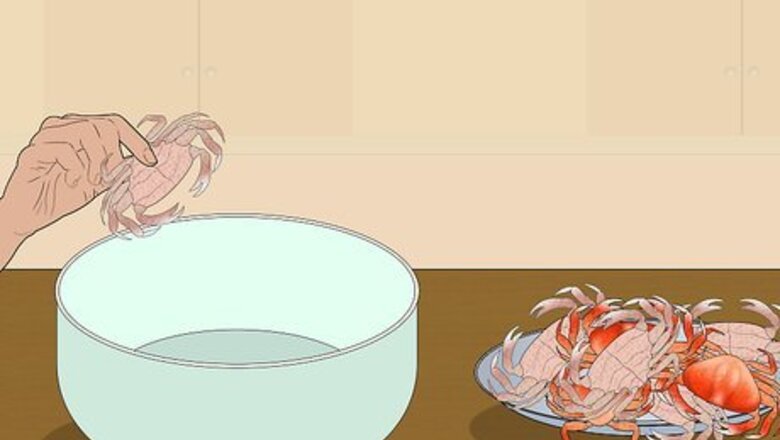
views
Boiling Dungeness Crab
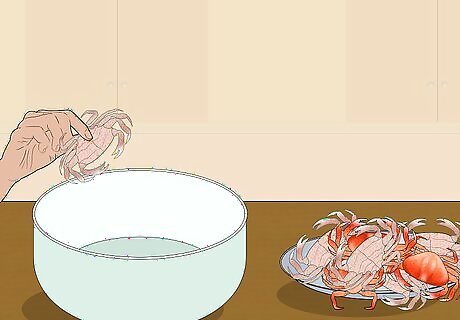
Choose a pot large enough to fit the crabs. It’s important that all the crabs you're cooking will fit into the pan with at least 3 inches (7.6 cm) of space between the top of the water and the rim of the pan. To check, you’ll need to grab the crabs by the back of the shell (between their back legs), plop them into the pan, and look for those spare inches of room. Take the crabs out after you’ve checked. If handling or boiling live crabs is unappealing to you, you can kill them first by flipping them belly up and whacking them on the underside (just above the abdomen) with a blunt object like the heavy handle of a knife.
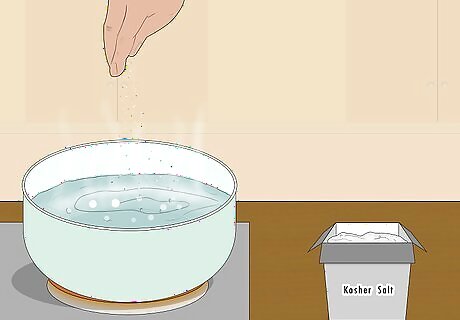
Prepare the pot with boiling water. Boiling water is one of the best and simplest ways to cook crab. Fill the pot with tap water about 3/4 of the way full and bring it to a rolling boil. Since their natural habitat is saltwater, add about ⁄2 cup (8.0 US tbsp) of sea salt per 1 gallon (4.0 US qt) of water to retain their salty-sweet flavor. You can also add any other seasonings to the water, but don’t overdo it so you can still taste the flavor of the crab itself! Kosher salt (or any salts with large granules) is a good choice of salt. Add ⁄2 cup (8.0 US tbsp) per 1 gallon (4.0 US qt) of water to try to mimic the saltiness of seawater. If you don’t know exactly how much water you have, add the salt while the water is warming and taste it—add more until it tastes just as salty as seawater. Add 3 tablespoons (0.19 c) of Old Bay Seasoning per 1 gallon (4.0 US qt) of water to amp up the flavor.
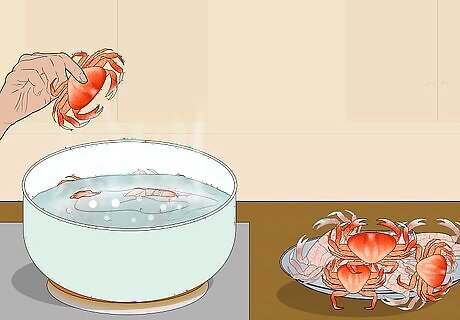
Add the crabs to the boiling water. Once the water is at a rolling boil, grasp each crab at the back of their shells (between the hind legs) and put them into the pot one by one. You can use tongs or your hands for this, but be careful to avoid any boiling backsplash! If the water rises to leave less than 3 inches (7.6 cm) between it and the rim of the pot, stop and ladle some out before adding the next crab. Grab the crabs with an oven mitt or towel for extra protection against boiling backsplash. Leave the pot uncovered (to prevent boiling over) and plan to boil the crabs for 12 to 15 minutes.
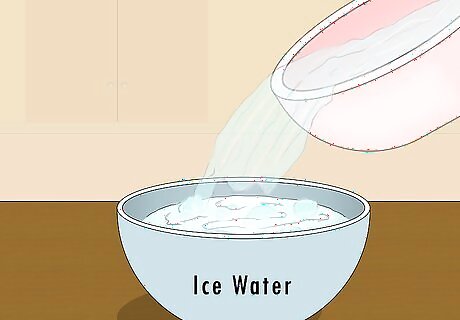
Place ice water in a large bucket or pan while the crabs are cooking. An ice water bath will cool down the crabs after cooking, preventing the meat from getting overdone since the water inside the shells will continue to boil after removing them from the pot. Cooling them will also make them easier to handle during the cleaning process. Place the ice water bath in close proximity to the stove for quick and easy access.
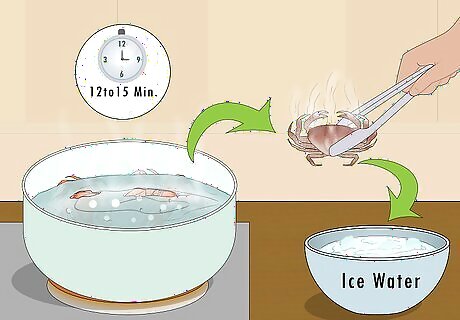
Use tongs to transfer the crabs after 12 to 15 minutes of boiling. You may want to turn off the stove at the 12 minute mark and let it sit for a few minutes so the water isn’t at a rolling boil when you’re transferring the crabs. Carefully grab each crab by the shell with a pair of tongs and plop them into the ice bath. Be very cautious because the steam will be extremely hot! Wear an oven mitt to protect your hands.
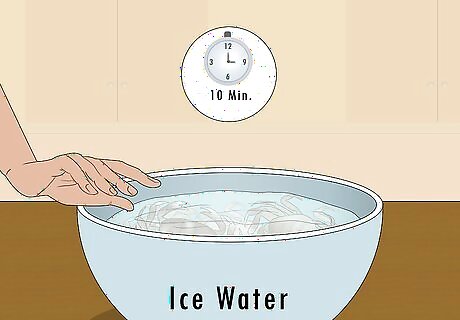
Remove them from the ice bath when the shells are warm to the touch. After about 10 minutes in the ice bath, poke one or two of the shells with your finger to see if they’ve cooled down enough. You'll want them to be slightly warm and comfortable to handle. Remember, the insides will be even hotter, so if they feel hot, leave them in the ice bath for 5 or 10 more minutes before testing again. If some crabs are exposed, add more ice water to completely cover all of them. Once they’ve cooled to a comfortable handling temperature, place them on a large cutting board to be cleaned.
Cleaning Dungeness Crab
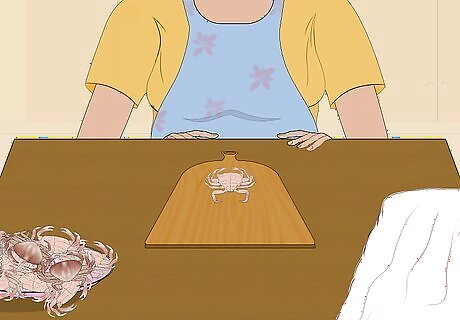
Place the crabs on a cutting board belly side up. Cleaning the crab properly is important to get out all the guts and things you and your guests will probably not want to eat. You’ll be taking it apart piece by piece, so make sure they’re cool enough to handle! Have a kitchen towel handy and wear an apron, because this is about to get messy!
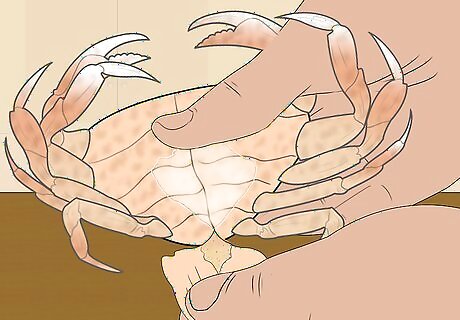
Pull off the triangular-shaped belly flap. The belly flap, or “apron” sits right in the middle of the belly and connects at the base of the crab between its hind legs. Find the tip of the flap near the middle of the belly and wedge your finger under it, then pull the flap up toward you and tear it off at the base. Rinse away any debris with running water.
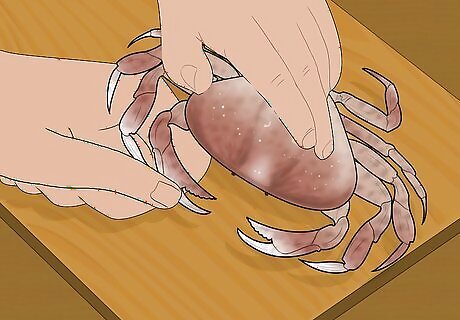
Flip it over and remove the shell. Turn the crab shell-side up and use your thumb and fingers to pry open the shell from the rear end. Boiling will have loosened the connective tissues, so the shell should come off pretty easily. Discard any liquid in the shell. If you like, scoop the fleshy golden crab butter from the shell into a small bowl (it looks like yellow mush and is considered a delicacy). You can stir it into the dipping butter later on or smear it straight on top of the crab meat. If you’re not serving the crab right away, cover the small bowl of crab butter with plastic wrap and put it in the refrigerator.
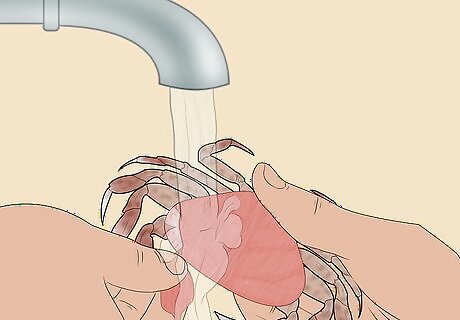
Pull away the membrane and scrape the guts from the center body. The reddish colored membrane usually comes off with the shell, but if it hasn’t, use your fingers to pull it away as well as any leftover loose pieces. Scoop away the guts with your fingers or a spoon and discard those as well. Then give the cavity a good rinse under a strong stream of running water. Rinsing after each step of the cleaning process helps wash away debris and will keep your station as clean as possible.
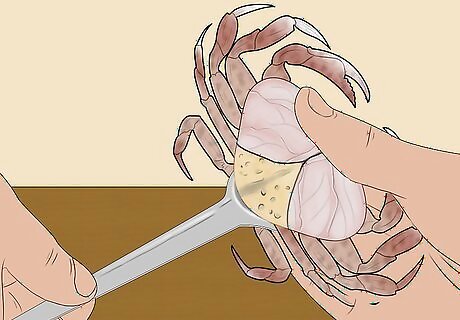
Scrape away the gills with a spoon and rinse. Use a spoon or your thumb to scrape away the long, spongy, leafy-looking gills that run along the sides of the body. They should come off pretty easily. There might be some more crab butter in the center of the body, so if you see any and want to use it, scoop it into that small serving bowl before rinsing the whole crab with running water again. Be careful not to rinse away any meat!
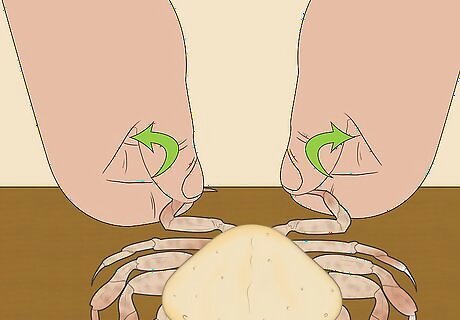
Pull the crab in half with your hands. With the belly side still facing down, grasp each side of the crab with the legs facing your palms and pull it apart. It should apart without much force, but wriggle it up and down if you need to. If you have a towel handy, this is a good time to wipe down your work station and cutting board.
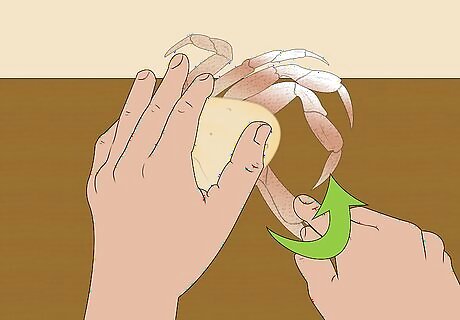
Twist off the claws and legs with your fingers. Hold one leg of the crab in your right hand (with the leg toward your palm and your thumb on the joint between two legs) and grab the body and other legs with your left hand, then twist and pull the leg away from the rest. Part of the body meat should come off with each leg. Repeat this twisting maneuver for all the legs and claws. If you’re not serving them right away, place each leg and claw in a sealed bag or container to be refrigerated and enjoyed within 2 days. Freezing them in a vacuum-sealed bag will keep them tasting fresh for months!
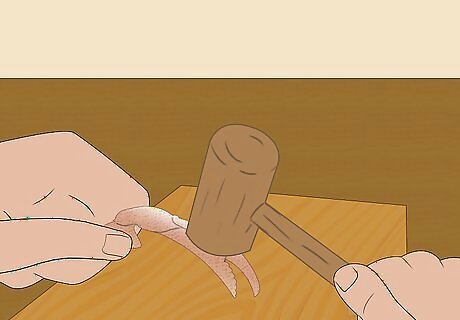
Smash the shells with a mallet around each joint for easier eating. Slightly pre-cracking the shells with a small hammer or the flat side of a meat tenderizer will make it easier to take out and eat the meat at the table. Aim for the areas just above and below the joints, since that’s where you’ll be cracking the shells later on for the easiest meat access. You’ll still need crab crackers but you won’t have to apply as much force if the shells are already a little pre-cracked. If you plan to eat them a few hours later, cover and refrigerate them until the time comes to dig in!
Enjoying Dungeness Crab
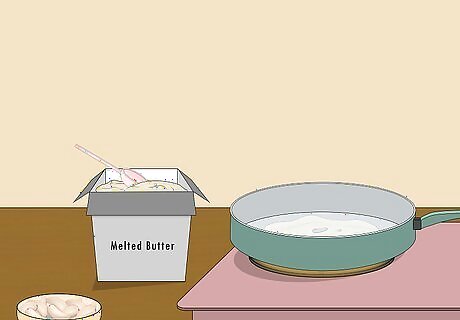
Prepare the melted garlic butter dipping sauce. Melted butter is the classic accompaniment to dungeness crab and will complement its naturally sweet, salty flavor. Place 1 cup (16 US tbsp) of salted butter into a small saucepan with 2 peeled cloves of garlic and heat on low until it’s fully melted. Once it’s melted, pour it through a small sieve into a medium-sized bowl to strain out the milk solids. Pour the dipping butter into individual dipping saucers, one for each person eating. Squeeze a slice of lemon and add a pinch of ground thyme to the butter while its melting for an extra zing of decadent flavor. If you saved the crab butter during the cleaning process, stir some (or all of it) into the prepared dipping butter for an extra-decadent bite.
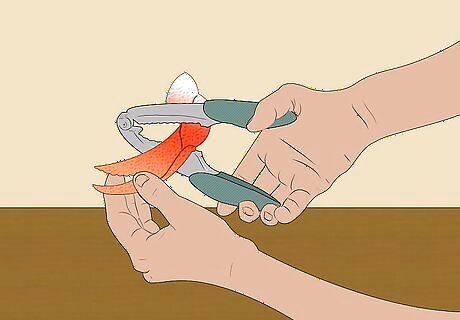
Use a seafood cracker to get to the leg and claw meat. Seafood crackers are essential for cracking open the tough shells of dungeness crab. They look a bit like nut crackers and you can probably find them at your local grocery store. Place the cracking grips around the legs just above or below the joints and firmly squeeze the two handles together. Rotate the leg around so the cracker’s grips get a firm hold on the shell. You may have to do a few cracks on different sides of the shell to fully break it open. You might have to use two hands to squeeze the handles together, especially on tougher parts of the legs and claws.
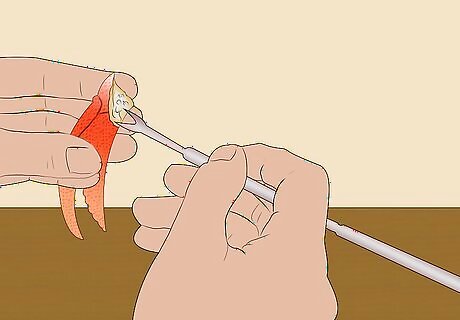
Scoop out the meat with a seafood pick. A seafood pick has a small spoon at one end and tiny 2-pronged fork at the other, perfect for reaching down deep into the legs to pull out that juicy meat! Insert the small fork end into the shell and move it around the perimeter of the inside of the shell to loosen up the meat before scooping it out. If you don’t have a seafood pick, a long, small object like a knife or toothpick will also work (but you might not get all the meat).
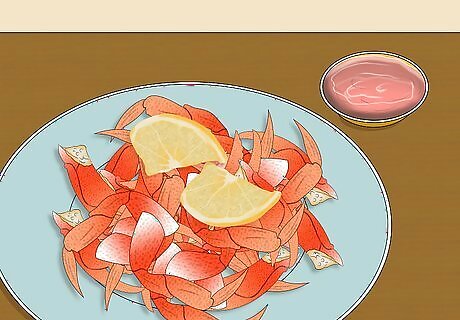
Dip the meat in melted butter and enjoy. Once you have your crab meat on the small fork, dunk it into your saucer of dipping butter and enjoy! If you saved some crab butter from the cleaning process, feel free to add a small dollop of that on top of the meat as well. To add a little spice to your meal, add 1 tablespoon (0.50 fl oz) of wasabi to your plate and put a little on each bite of meat. If you like an extra dose of citrusy zing, have a small wedge of lime ready to squeeze on the crab meat.




















Comments
0 comment